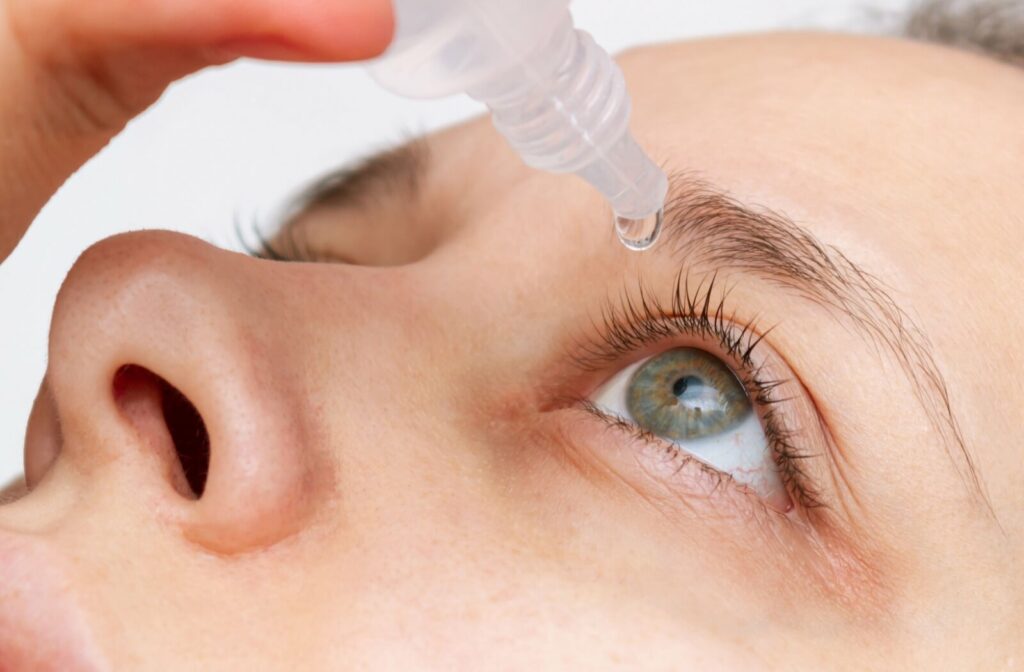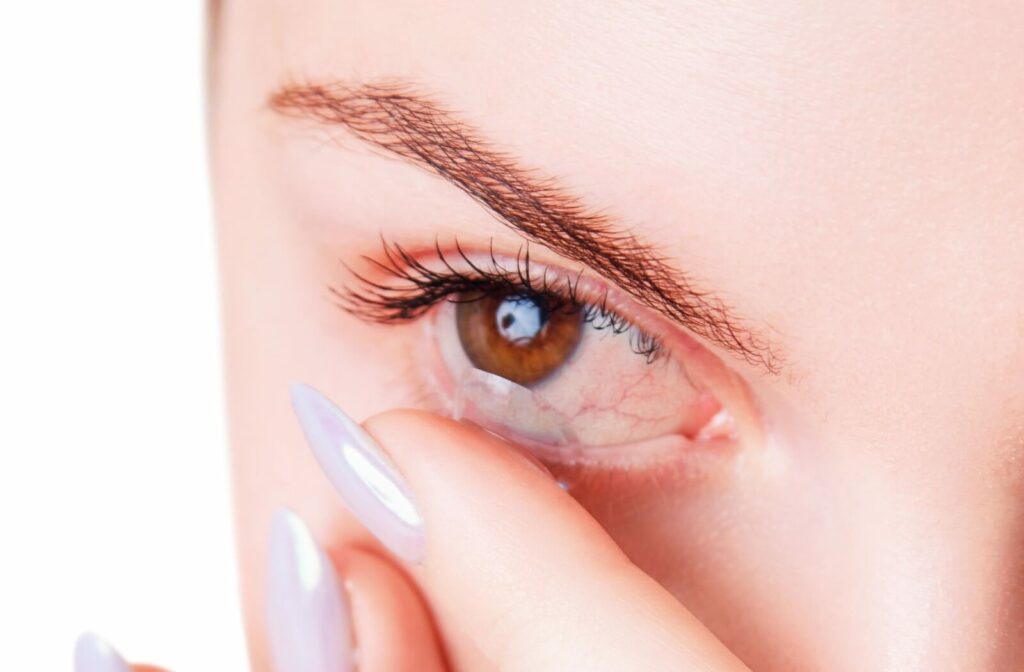For many, contact lenses offer a convenient alternative to glasses, providing clear vision without the hassle of frames. However, wearing contacts can sometimes lead to or exacerbate dry eye symptoms, making it a challenge to maintain comfort throughout the day.
Understanding how to manage dry eye effectively while using contact lenses is essential for ensuring both eye health and comfort. This includes using lubricating eye drops, taking regular breaks from screen time, or considering switching contact lenses.
Remember to schedule regular eye exams with professionals to keep your vision in top shape.
Understanding Dry Eye Syndrome
Dry eye arises when your tears fail to provide sufficient lubrication for your eyes. This can be influenced by several factors:
Prolonged Screen Time: A major contributor, as it tends to reduce the blink rate, leading to decreased tear spread and more rapid tear evaporation, causing dryness.
Environmental Conditions: Wind, air conditioning, or even heating systems can significantly dry out the eyes by increasing tear evaporation.
Underlying Health Issues: Allergies, hormonal changes, or autoimmune disorders can impact tear production, further exacerbating dry eye symptoms.
Dry Eye with Contact Lenses
When you wear contact lenses, this can sometimes disrupt the natural tear film by absorbing moisture, which intensifies the sensation of dryness and discomfort.
Contact lenses sit on the eye’s surface, creating a barrier that can impede the flow of oxygen and the natural distribution of tears across the eye. This can lead to irritation and a heightened feeling of dryness, especially if the lenses are worn for extended periods.
Understanding these factors and how they interact with contact lens use is important for managing dry eye effectively and maintaining optimal eye health and comfort.
Tips for Managing Dry Eye with Contact Lenses

Use Lubricating Eye Drops
One of the simplest solutions to combat dry eye is using lubricating eye drops specifically designed for contact lens wearers. These drops help keep your eyes moist, reducing discomfort and irritation. It’s important to choose preservative-free formulations, as preservatives can sometimes worsen dry eye symptoms.
Maintain Proper Lens Hygiene
Proper hygiene is important when wearing contact lenses. Always wash your hands before handling lenses, and ensure they’re cleaned and stored properly. Use fresh, clean solutions each time you store your lenses to help prevent irritation and infection.
Take Regular Breaks from Screens
In our digital age, screen time is inevitable, but it can also significantly contribute to dry eye. To reduce strain, follow the 20-20-20 rule: every 20 minutes, look at something 20 feet away for at least 20 seconds. This allows your eyes to relax and promotes blinking, which can help maintain a healthy tear film.
Stay Hydrated
Hydration plays a crucial role in maintaining eye health. Drinking enough water throughout the day can help keep your body—and your eyes—well-hydrated, which is essential for tear production.
Consider Switching Lens Types
If dry eye symptoms persist, you might benefit from switching to lenses that are designed for dry eyes. Daily disposable lenses can be a good option, as this means a new lens every day, reducing the risk of deposits that can irritate the eyes. Additionally, some contact lenses are made from materials that allow more oxygen to reach the eye, which can help reduce dryness.
Consulting with Eye Care Professionals
Managing dry eye isn’t a one-size-fits-all approach. It’s important to consult with an eye care professional who can provide personalized advice and treatment options tailored to your specific needs. An eye exam can help determine the underlying causes of dry eye and guide you towards the best solutions, whether that means adjusting your lens type or exploring other treatment options.
Technologies in Dry Eye Management
The field of eye care is continually evolving, with new technologies emerging to address dry eye more effectively. At Virginia Eyecare Clinic, for instance, we use tools like OCT (Optical Coherence Tomography) and corneal topography to better understand and manage eye conditions, including dry eye. This allows for precise diagnosis and tailored treatment plans, enhancing the overall care experience.
Treatments like OptiLight by Lumenis provide non-invasive options for managing dry eye by improving the quality of the tear film and reducing inflammation. This not only alleviates symptoms but also contributes to long-term eye health.
Lifestyle Adjustments for Long-Term Comfort
In addition to the tips above, making small lifestyle adjustments can significantly impact your eye comfort. Using a humidifier in dry environments, wearing sunglasses outdoors to protect against wind and sun, and incorporating omega-3 fatty acids into your diet are all simple ways to support eye health.
Expert Solutions for Managing Dry Eye with Contacts
Dry eye can be a frustrating condition, especially for those who rely on contact lenses. However, with the right strategies and support from eye care professionals, it’s possible to manage symptoms effectively.
By taking proactive steps, such as using lubricating drops, maintaining lens hygiene, and exploring advanced treatments, you can enjoy the convenience of contact lenses without the discomfort of dry eyes.
Schedule your next appointment with Virginia Eyecare Clinic for a personalized dry eye treatment and contact lens consultation. Our expert team is equipped with the latest in eye care technology to provide you with tailored solutions for your eye health needs.



